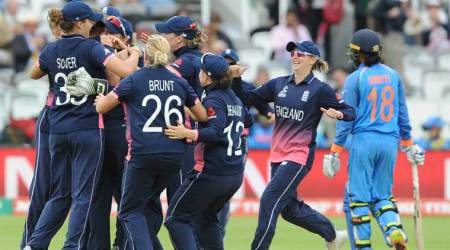 Indian women’s cricket team (Source: AP)
Indian women’s cricket team (Source: AP)
Women’s sports have always assumed a rather peripheral identity. For decades, cricket has been territorially male, where men’s Indian cricket team has assumed an over-glorified, larger-than-life status – one that is diametrically opposite to the coverage and status given to the Indian women’s cricket team. The degree of coverage women’s cricket has received in the past on television in India in comparison to its male counterpart, has been abysmally low.
And this is significantly apparent in the cultural context as well. If you pan the lens towards Bollywood, several films have been made which revolve around cricket, unfortunately however, the teams have always belonged to one specific gender. From films like Lagaan and Iqbal to biopics on cricket demigods Sachin and M.S Dhoni, the narrative of Indian cricket has been been unapologetically male. Occasionally, there have been a few oddballs thrown in, like Chak De! India and Dangal, which depicted women as solid athletes in their own right, but the success of these films have always been chaperoned by a veteran star, without whom one isn’t sure how popular these productions would have been. In Bollywood too, therefore, women and sports together has seldom seen the limelight.
Yesterday, however, proved to mark a new chapter in the culture of cricket spectatorship, where the country united to watch the ICC Women’s World Cup finals, a match between India and England. The hype and the spirit of nationalism was ubiquitous and undeniably palpable – a rarity in women’s sports. The credit could be given to perhaps the heightened coverage the ICC declared that it would give to the women’s game. For the first time, it promised to broadcast every match held by the ICC Women’s World Cup 2017, live across 139 countries. In addition, it promised a glorious prize money for the winner: $2 million, which was “the first step towards greater parity and recognition,” ICC had announced.
Suddenly, the women’s cricket World Cup, now accessible to all those with television screens, became a game changer in terms of how India looked at women in sports. Almost overnight, the women’s cricket team gained substantial prominence. Those who had never heard of Mithali Raj or Harmanpreet Kaur, were now self-proclaimed loyalists spurting from various corners of the country, waving the Indian flag and chanting their allegiance to team that had seldom seen the limelight.
However, the unprecedented spike in the popularity of women’s cricket, will perhaps be ephemeral. Even though yesterday saw a spectacular unison of a country, cheering for the same team, the heightened degree of importance given to the women’s cricket team is of a transient nature. In reality, women’s cricket in India competes for the same limelight as the unparalleled men’s cricket team does, and a patriarchal India is not ready to give women that much prominence just yet.
Women’s cricket has a few supporters, and even though a few may have jumped on the bandwagon recently, there is a great possibility of them falling off within the next few weeks. History proves thus: this isn’t the first time the women’s team made it to the semi-finals. It did so back in 2005, and while it gained some prominence back then as well, it coiled back to becoming a neglected entity soon after. There is a good possibility of that happening once again. While cricketers like Kapil Dev, Sachin and Dhoni will continue to be revered for decades to come, Mithali Raj and Harmanpreet Kaur are names that may have brought prestige to the country (even though they may have not won the World Cup), but their names will soon be forgotten.

